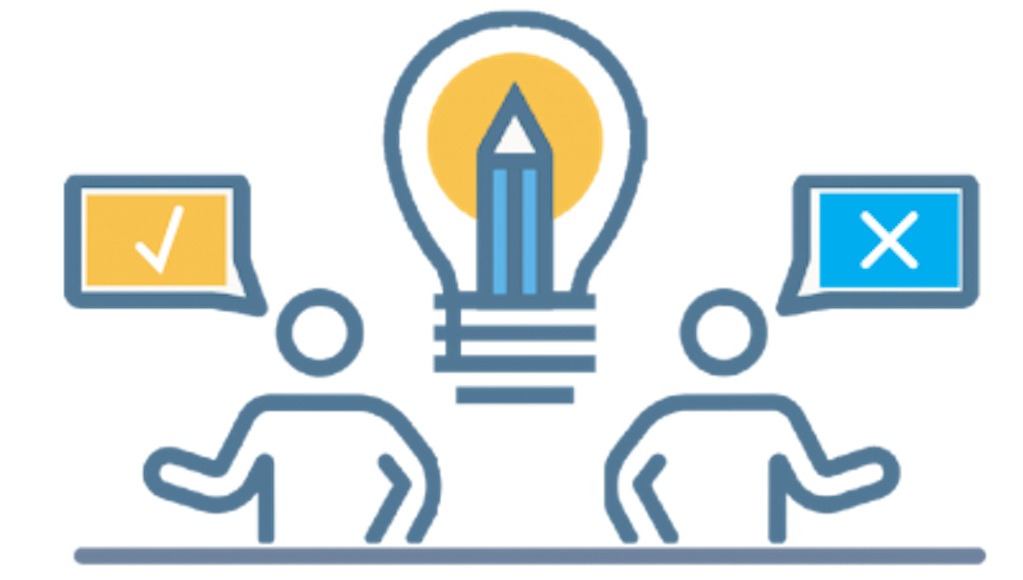Rethinking our roles in the war for facts

(Editor’s note: Newsroom change leader Michele McLellan headed up the News Co/Lab’s reporting on Best Practices. In this, the fourth of four posts, Michele discusses the role of tools and techniques in advancing news awareness.)
The news and information crisis is so complex and fluid that all of us who care about facts — journalists, educators, citizens, public servants, tech actors — need to rethink our roles in fighting disinformation.
The crisis is “a tangled knot that is changing and creating new knots all the time,” says Heather Chaplin, director of the Journalism + Design program at the New School. Chaplin cites “massive technical disruption, fraying trust, collapsed mainstream media business models, fractured audiences, rising propaganda machines, a White House bent on discrediting the whole enterprise” as factors, entangled further with societal shifts and political polarization.

Michele McLellan
- Is it all just too much? In a way, but Chaplin hopes the magnitude of the problem will inspire rather than depress. As the crisis grows, more players are joining the fight. Still, solutions seem elusive.
Social media giants Google and Facebook, today the dominant distributors of news and information, are waking up to the need to do better. (Disclosure: Facebook is a News Co/Lab supporter.) Their dilemma: How can their algorithms favor credible news and information without drowning out freedom of expression?
It is too soon to judge how effective their efforts, which keep evolving, will be in the long run.
In January, Facebook announced an effort to promote news and information from more widely trusted sources. But its opacity about exactly how it will do that (and what user data it will use) has engendered confusion and skepticism. In April, the company announced data protection measures, after admitting the data of some 87 million people was scraped in an unsavory effort to manipulate voters.
Google, meanwhile, has made some headway in preventing fake stories from attaining high search rankings. But its announcement that it was testing Bulletin, an app with which anyone will be able to post local news, raised questions about the potential for even more misinformation.
Both platforms still promoted false stories when major news was breaking (and facts were in short supply), notably when lies circulated immediately after the mass shooting in Las Vegas in 2017. Misinformation following the massacre of 17 at a school in Lakeland, Florida added a new twist: A reporter’s Tweet was doctored to inject bias.
Google and Facebook are working with the Trust Project, which is partnering with news organizations to implement “Trust Indicators” such as transparency about policies and practices. The platforms will be able to detect that the indicators are in place and will raise the profile of news from these organizations. That said, no major tech firm has come to grips with the newest form of viral deception: fake audio and video.
At the end of the day, upgrading the technology doesn’t matter unless people, through education, also are upgraded. Without more savvy on the “demand side,” credible news seems unlikely to beat the fierce competition from disinformation spread across social platforms by armies of bots, fakers and their unwitting minions.
There are signs that Americans are waking up to the disruption of disinformation in civic life. A survey of 19,000 U.S. adults by the Knight Foundation and Gallup found that they believe the spread of misinformation is a major problem. Most people said they believed credible news is critical to democracy. They want the news media to do better.
A 2017 Pew study underscores both the danger and the opportunity. Danger: Half of those surveyed are wary or distrustful; they have given up on trying to sort through the world’s neverending tsunami of “new information.” But there also was a major opportunity: One in five American adults said they want to improve their news literacy – that’s a place to start.
If some 30 million people (1 in 5) say they want to learn more about how news and information works, whose job is it to help them? It’s the job of everyone who understands the need. Yet no one has a greater stake in media literacy than journalists and other professional media makers, who depend on a loyal, engaged readership that appreciates trustworthy news and information.
News and media literacy has long been primarily the province of educators (and, unfortunately, not enough of them). But as the crisis deepens, journalists and other media makers can help scale news literacy education by embedding it in their transparency and engagement practices.
Explaining key practices is a first step. Information providers who find ways to listen to and engage with communities they hope to serve will engender more confidence in facts they provide. But educating the public is at the heart of the solution.
Dan Gillmor, co-founder of News Co/Lab believes the crisis of misinformation presents journalists with an “extraordinary opportunity” to act and to strengthen their bonds with communities whose support they need to survive.
Gillmor says the collapse of trust in media means journalists, alongside educators in schools and libraries and others who make media, have to recognize their significant stake in the future of the public’s understanding of journalism and act to raise that understanding.
“They won’t just be doing better by their communities. They’ll also boost their own standing at a time when the general public has so little trust in the craft.”
